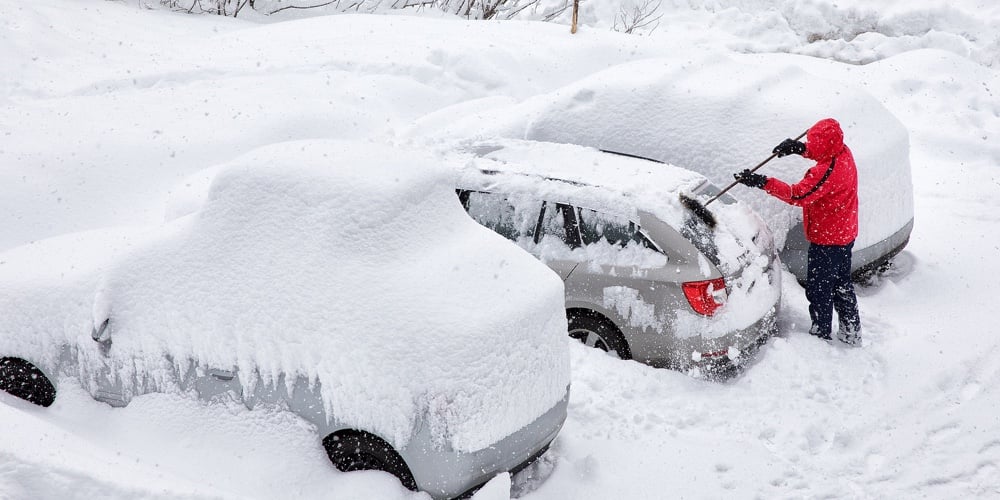Avoid productivity delays this season by winterizing your office

Winter presents challenges to business owners, like power outages, frozen pipes and uncomfortable workplace temperatures. The good news is it’s possible to keep productivity consistent and run a company as usual this season with the proper preparation. Here’s how to winterize the office, from ensuring the building is well insulated and has adequate heating to installing backup generators.
How cold weather affects productivity
It’s essential to winterize the office for several reasons. It protects the building from water damage after snowstorms. A winterized building will also keep heat in and cold and moisture out, protecting equipment and employees from uncomfortable working conditions.
In addition, winterizing provides solutions for power outages. Prepared businesses can prevent information and data loss, which would otherwise halt daily operations.
How to winterize an office
Winterizing should happen at every level, from the moment employees step out of their cars until they sit at their desks. Business owners should ask workers how to mitigate potential risks. They spend the most time in the office and know what needs attention.
1. Create a general winter maintenance and safety plan
Managers should hire professionals who know how to deice parking lots and walkways. Otherwise, employees should be trained on proper practices. Stocking up on rock salt or calcium chloride is a good idea to keep parking lots clean.
Businesses should also have adequate signage and cones indicating icy or dangerous zones around buildings or parking lots. There should also be a designated area to store boots and umbrellas near the entrance to prevent slippery messes inside the building. Installing carpet or runners will help to prevent puddles and water spots.
2. Install backup generators
Power outages can reduce productivity. Counter this by installing backup generators and uninterruptible power supply (UPS) machines. That way, if a blackout occurs, employees can still access important data and finish tasks. It’s also essential to implement regular backups and test information recovery processes regularly. A business might also consider off-site data storage to protect customer information.
3. Winterize the roof
Before winter, business owners should ensure they inspect the roof for loose vents, poorly sealed flashing, leaks and cracks. They can hire professionals to clean gutters, insulate the roof and seal flashing to ensure it can withstand cold weather and snow. A complete gutter cleaning will also prevent snow dams and decrease water damage risk on icy days.
Gutter cleaning is essential, especially if the office building has a flat roof. This type is more vulnerable to moisture damage due to limited drainage options.
4. Ensure there is adequate heating
Install programmable thermostats that adjust the temperature based on the number of people in the building or the time of day. The Occupational Safety and Health Administration recommends that employers keep thermostat temperatures between 68 F and 76 F in offices. However, some people will always feel it’s too cold or hot.
Office temperature is an age-old debate, and finding a solution that works for individuals and the company is paramount. The answer is allowing employees to use space heaters. They are safe as long as they have a safety certification label and an automatic shut-off in case the unit tips over. Providing company-branded sweaters or blankets that people can keep at their desks may also be worthwhile.
5. Protect pipes from freezing
Business owners should implement prevention measures to protect pipes from freezing in the office building. They can insulate pipes in unheated areas with pipe covers or foam insulation. Setting the thermostat at a consistent temperature also prevents problems. Leaving faucets open to keep water flowing is best during power outages, especially during extremely cold weather.
6. Seal cracks and gaps
Maintaining doors and windows is one of the best ways to retain heat in a building. Replace damaged weatherstripping and seal cracks or gaps to prevent cold air from entering. This can reduce heating costs significantly and ensure employees stay warm indoors. Other insulation-enhancing techniques, like thermal curtains or window film and coating, will minimize heat transfer.
How to ensure business continues in adverse weather
In addition to winterizing the office building, employers and business owners should develop emergency plans and protocols for colder days, power outages and heating failures. Managers should monitor weather conditions and communicate with employees by email or text to adjust working hours or add remote days when the weather presents health risks.
An emergency plan should address what employees should do during a power outage or urgent situation. This can include knowing how to switch on backup generators, turning off non-essential computers or equipment to save power, and having a safety meeting point.
Prevent productivity delays this winter
A winterized office ensures business continues as usual and protects employees from dangerous accidents and weather conditions. Therefore, business owners must prioritize proper insulation and adequate heating and implement emergency plans during snowstorms or power outages.





